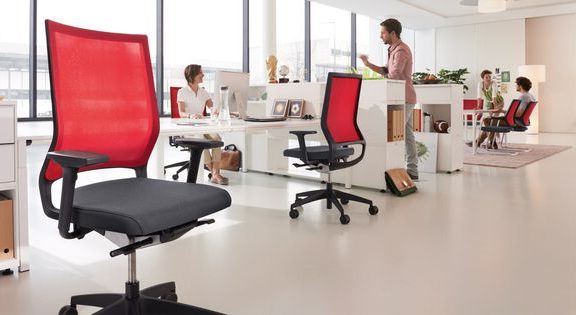Are you sitting comfortably?
It is a legal requirement for employers to provide any staff members who will be sitting down for long periods with ergonomic office chairs. Even if there wasn’t a legal requirement, companies would still be wise to supply ergonomic office furniture for the sake of the health not only of their employees, but also their profits.
The Health & Safety Executive estimates that 6.9 million working days were lost in 2018/19 because of musculoskeletal problems, with each sufferer taking an average of nearly two weeks off work as a result – and with the average cost to an employer of a seven day absence being £8,300, employers cannot afford to take risks with their staff. The good news is that absences for musculoskeletal problems has been a downward trend since the mid-’90s – can it be coincidence that during this time, ergonomic office chair designs have been getting better and more effective?
Why does modern working pose so many health risks?
The tech obsessive world that we live in is partly to blame for our poor posture. These days, many of us seem to spend our entire life hunched over computers, phones and tablets, usually whilst we’re sedentary, which poses an entirely new set of problems. Posture is hugely important because the accumulated stress on your body – especially your lower back – will eventually cause pain.
This happens because hunching your shoulders will put a strain on your muscles, reducing the blood supply which will result in them slowly becoming stiff and weak. Hunching over your desk also puts more strain on your lower spine, and over time this could end up herniating your spinal discs, causing you a lot of pain, as well as the increased risk of pinching the sciatic nerve which will cause sharp pain passing down the nerve through your hip and down your leg.
An ergonomic office chair will help you prevent avoidable back pain by encouraging good posture. Your Health & Safety representative will be able to help you adjust your chair to fit your body. You may also need extra lumbar support or a footrest to help you achieve the most effective position.
What makes a chair ergonomic?
When you’re buying new office chairs, make sure they have all the features you need in order to be truly ergonomic. These include:
- Adjustable seat height – users need to sit with their feet flat on the floor, their thighs horizontal, and arms even with the desk
- Adjustable seat depth – users must be able to sit with their backs against the backrest, and have two to four inches between the backs of their knees and the seat of the chair
- Adjustable seat back – the back of the seat must be adjustable with a forward or backward tilt
- Curved lumbar support – as the lower back has a natural curve, the chair back needs to support it with a similarly-shaped curve





